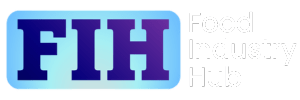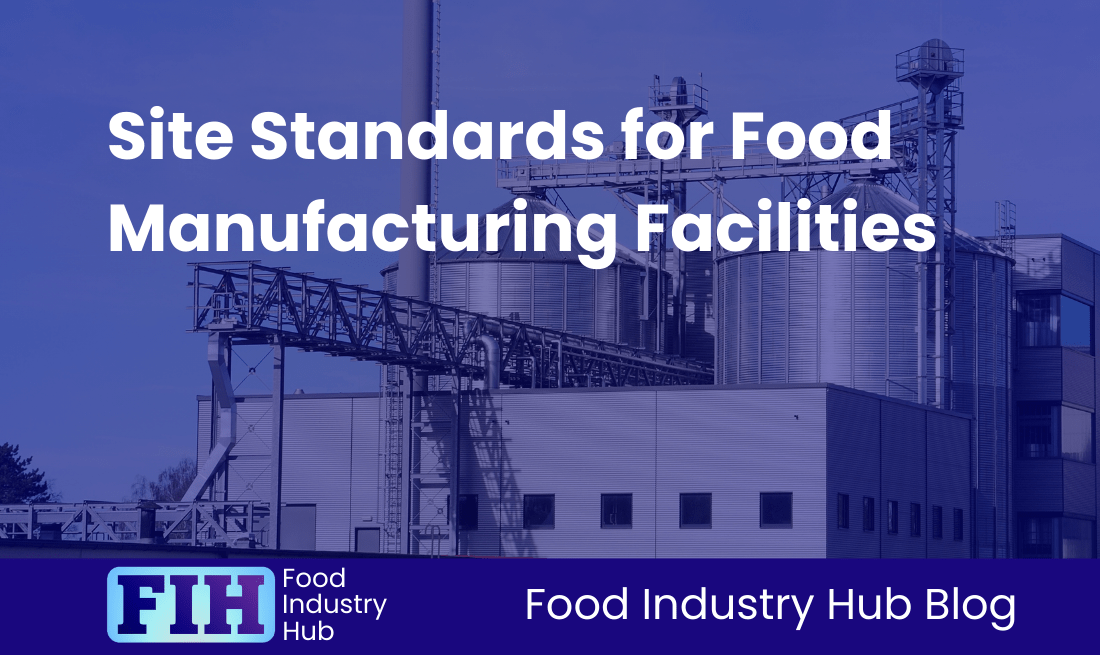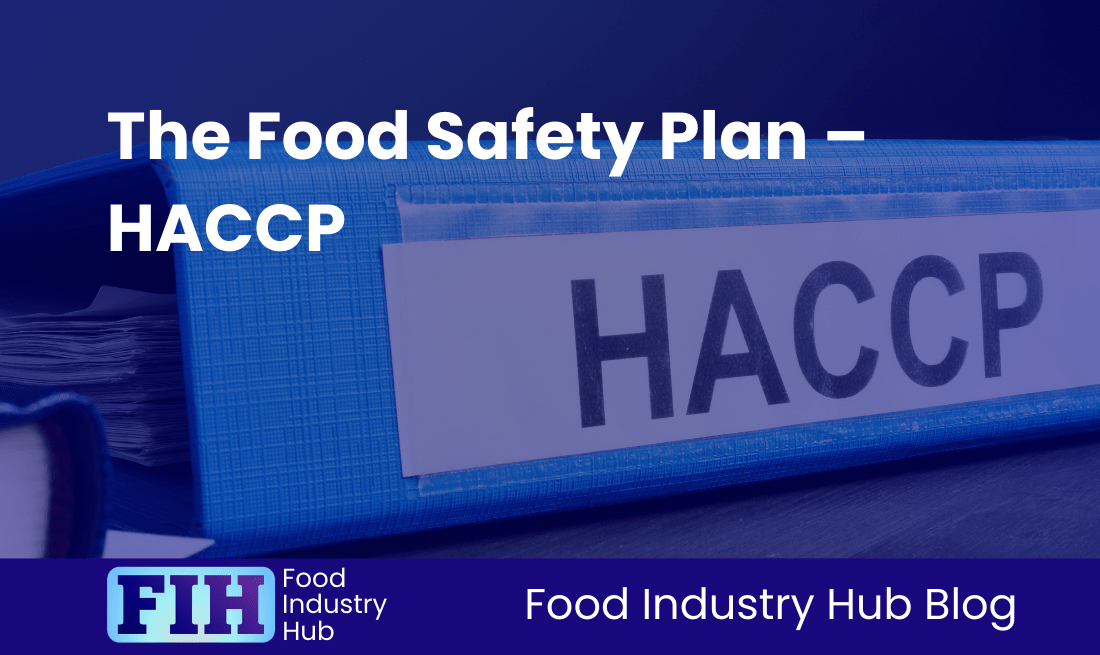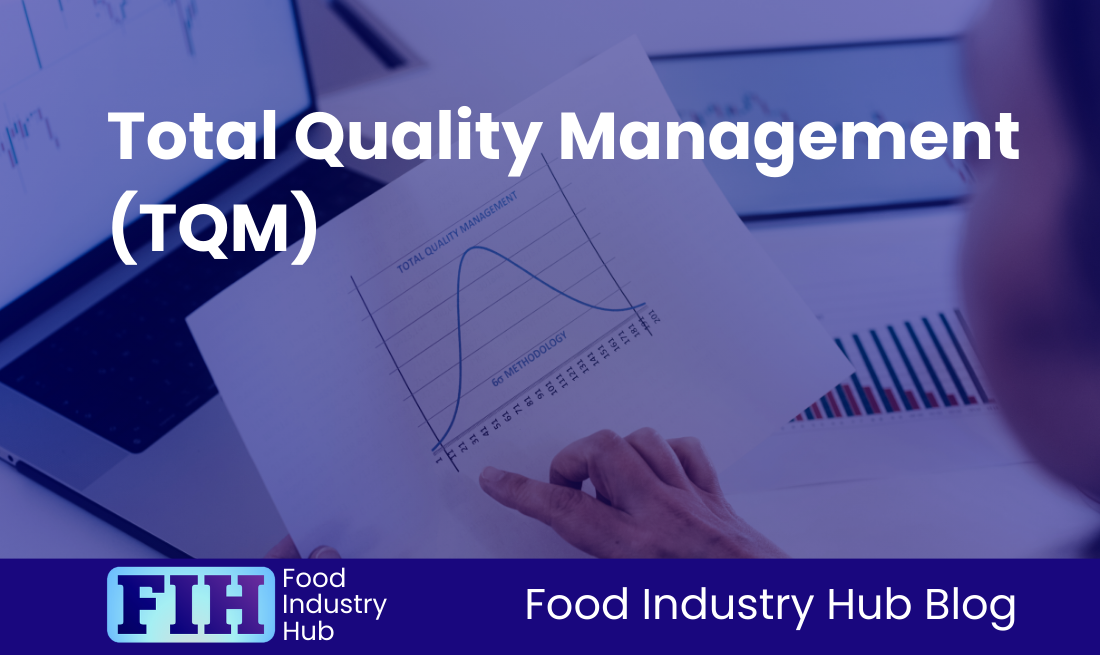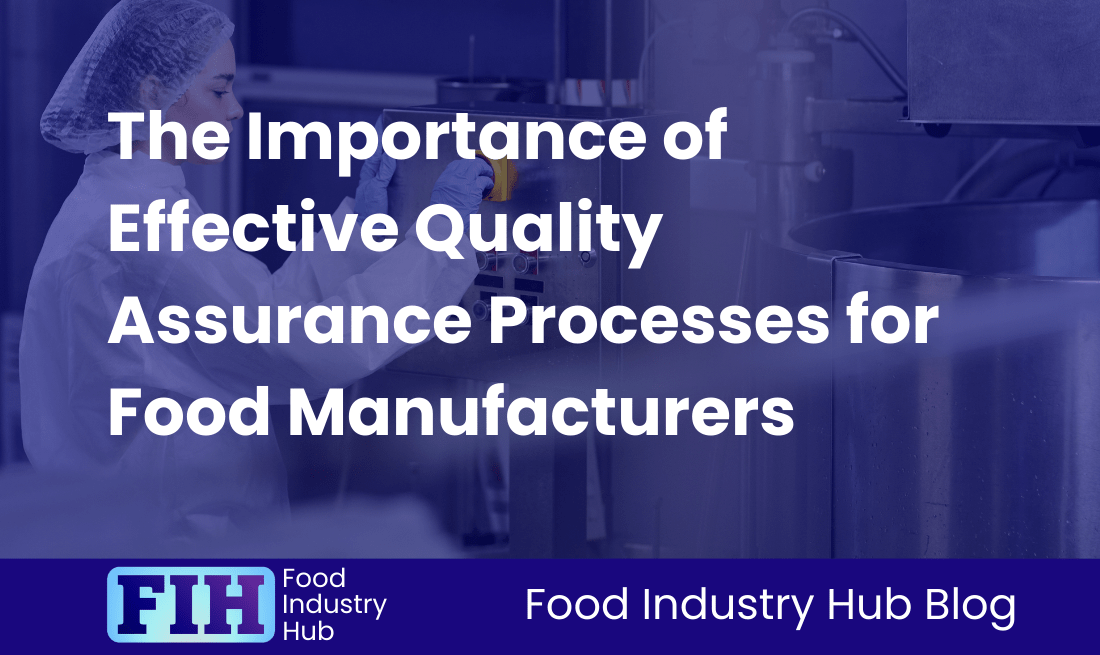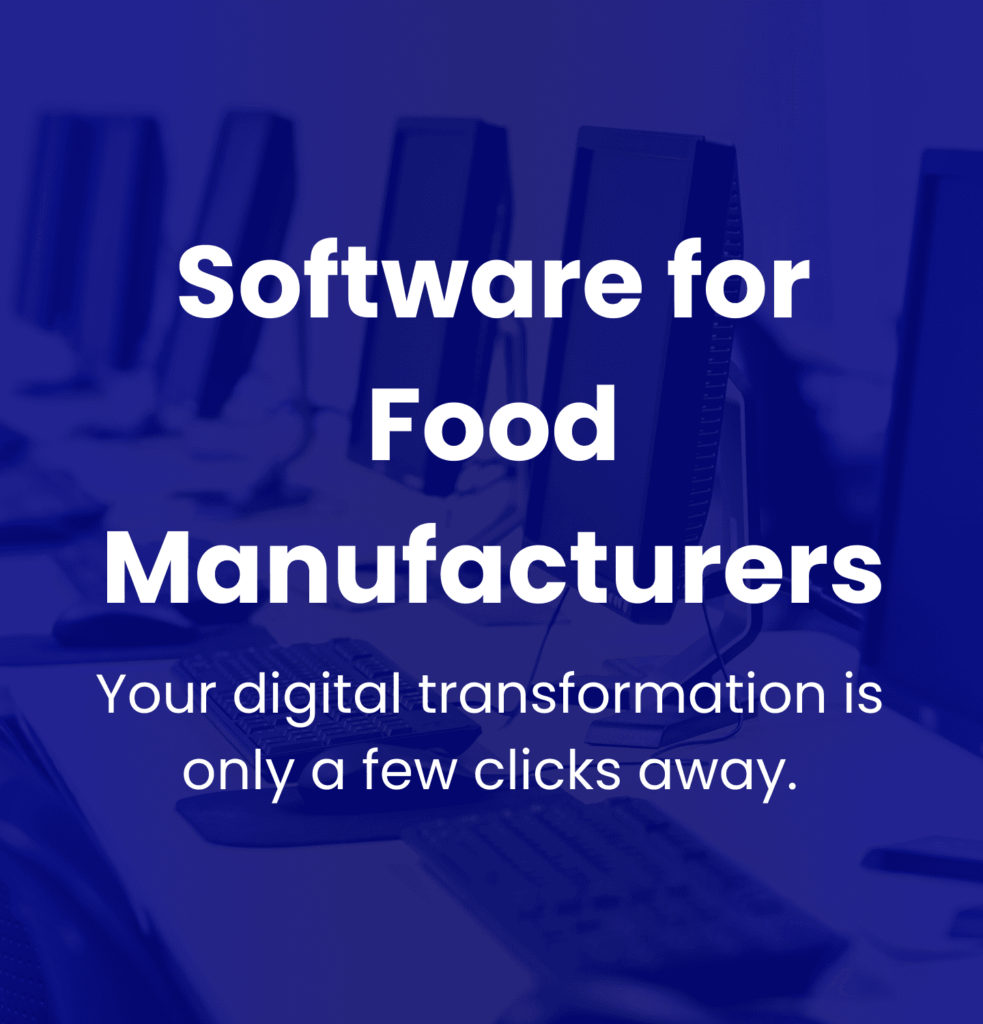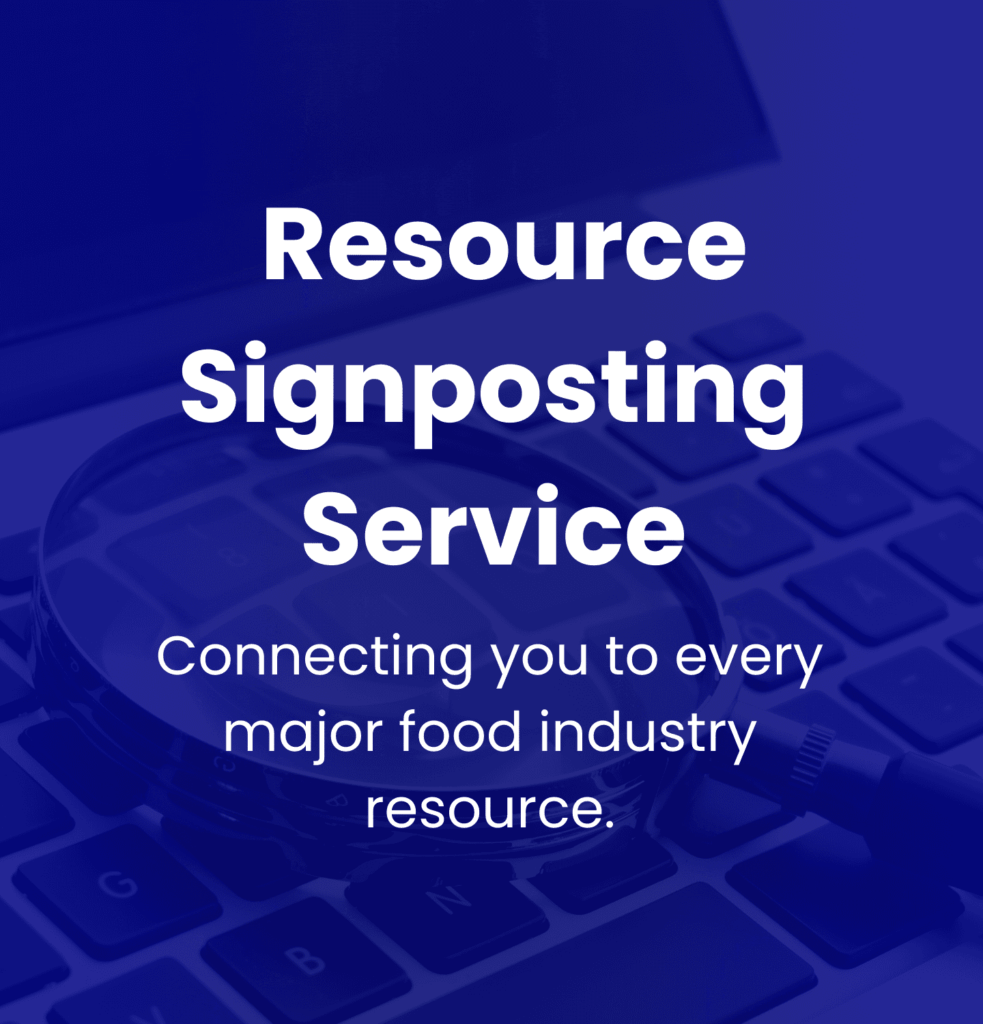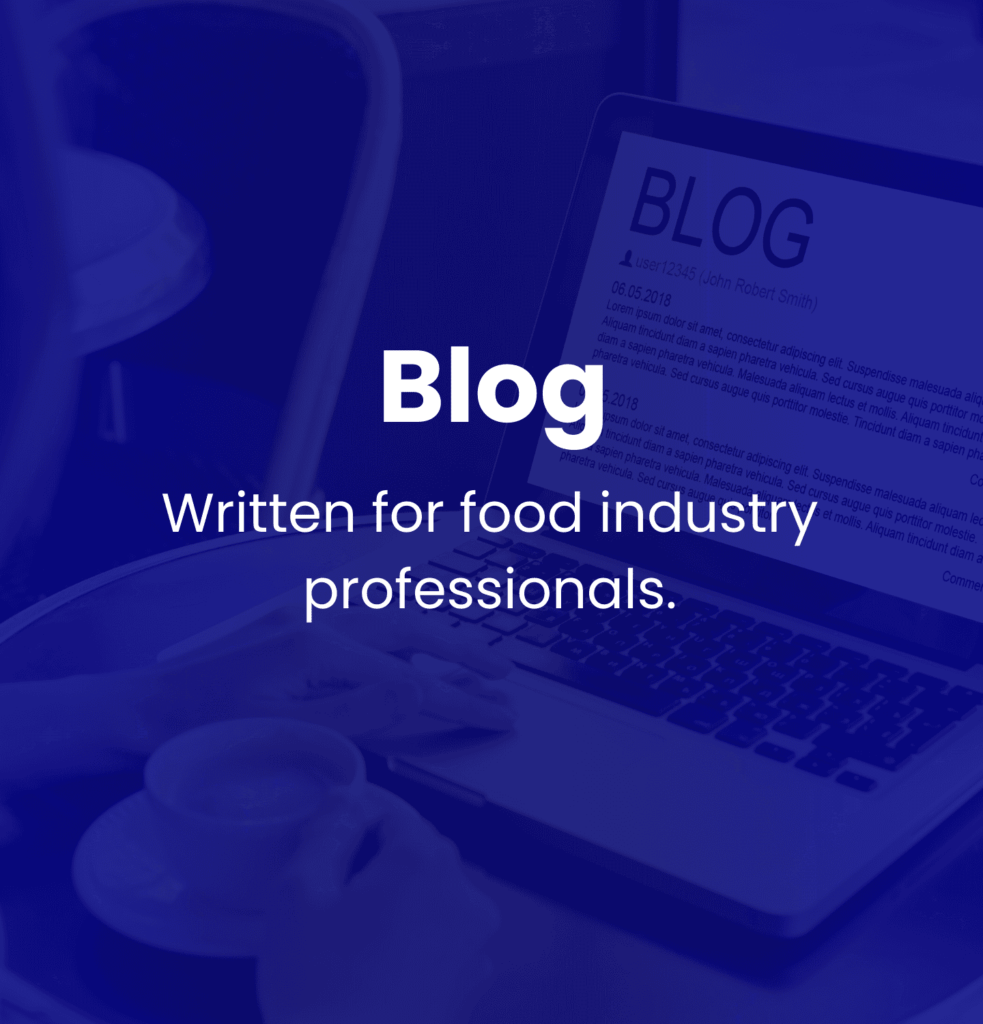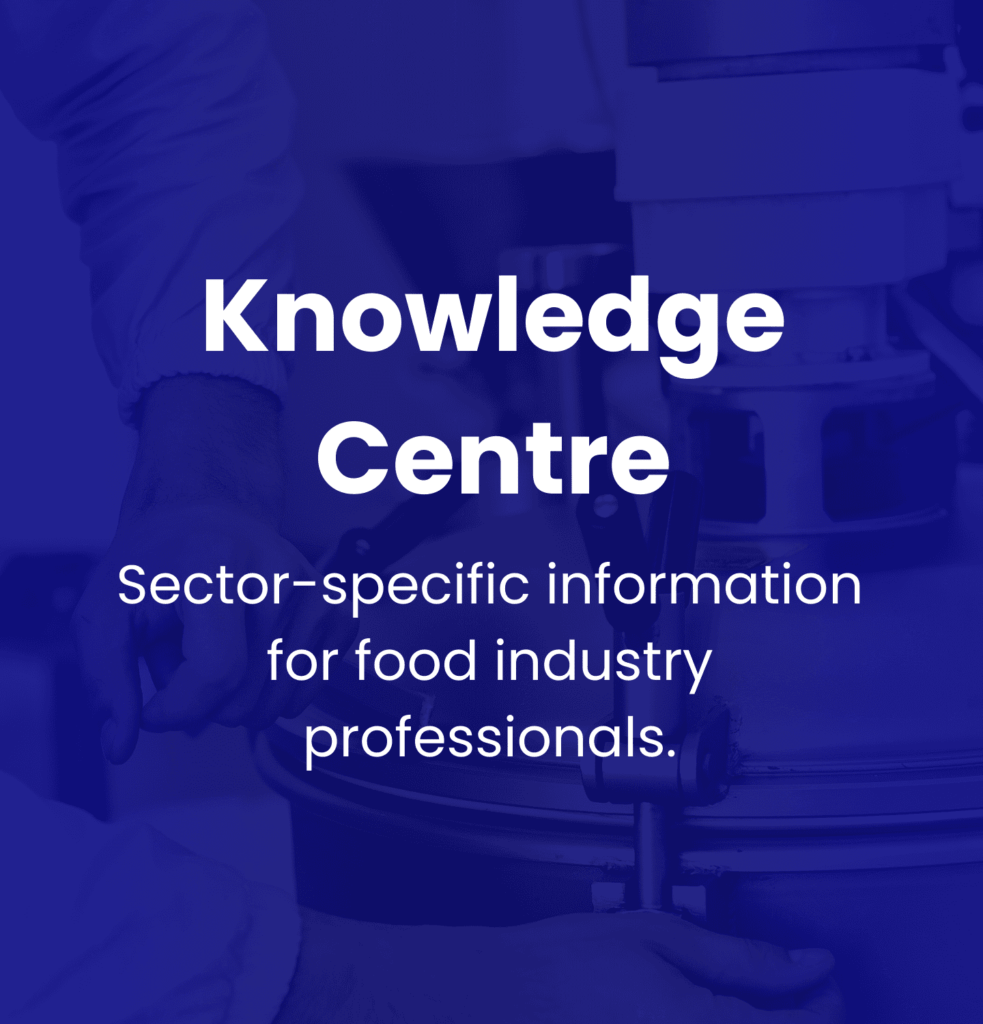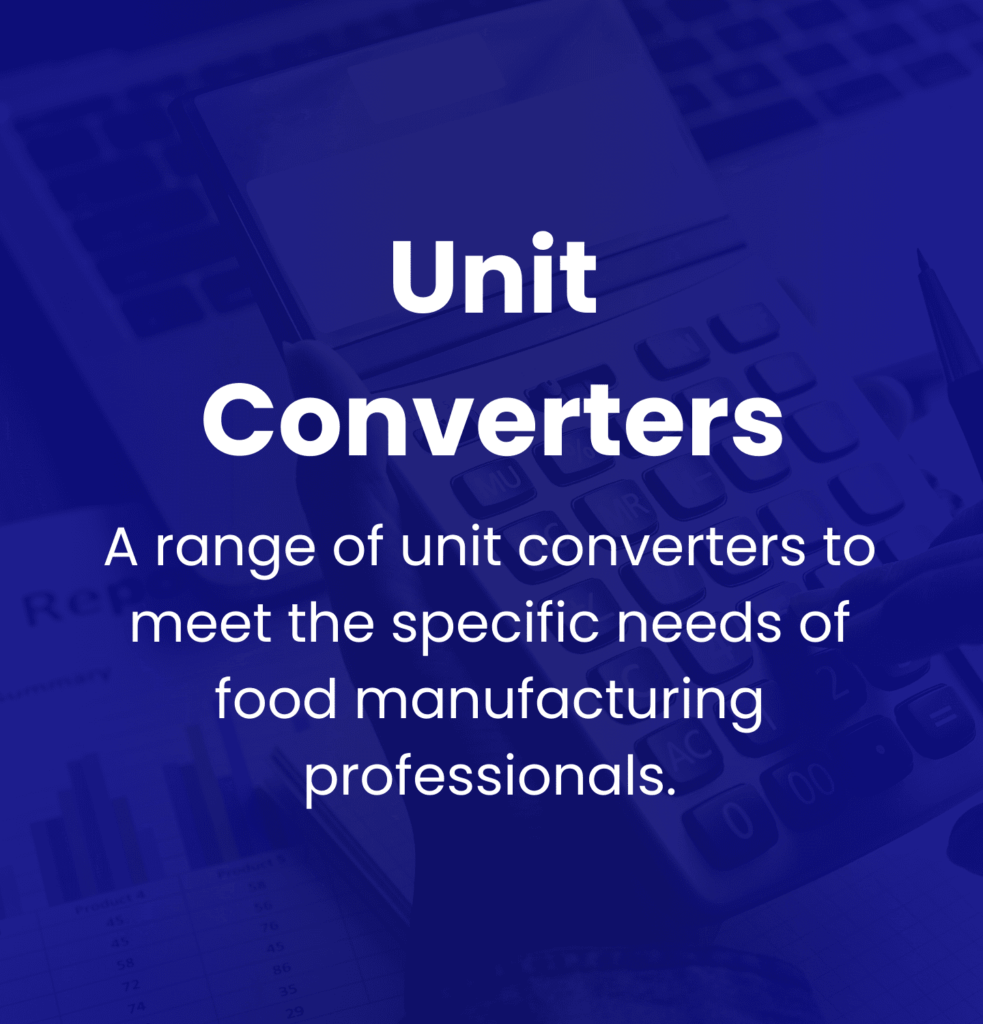Know: Equipment Calibration
Introduction
In food manufacturing, well-calibrated equipment is essential to uphold safety, quality, and legal compliance, along with preserving product authenticity. The validity of measuring devices is elemental, where even minor discrepancies could trigger contamination, spoilage of goods, or breaches in regulatory norms. Consequently, calibration is a process of paramount importance, ensuring equipment’s adherence to set performance standards—it acts as a beacon, guarding consumer health and preserving the sanctity of the industry.
The act of calibrating equipment involves a systematic approach to adjust and validate the accuracy of measurement instruments against known benchmarks. Calibration verifies instruments like thermometers, pH meters, and scales to ensure the production of reliable and precise data integral for quality control in food production. By substantiating alignment with accepted standards, calibration serves a pivotal role in maintaining the integrity of food manufacturing practices.
The significance of equipment calibration within the food production industry is emphasised by several key functions. It facilitates the consistent manufacture of products, meets safety standards to prevent foodborne illnesses, and assists in maintaining legal compliance. Culmination of these efforts, enabled through accurate calibration, allows companies to effectively manage aspects like temperature control and monitor vital parameters. This approach aids in preserving product quality and mitigates risks associated with substandard processing or mismeasurement.
The interplay between equipment calibration and the four fundamental aspects of food manufacturing—safety, quality, legality, and authenticity—is substantial. Efficient calibration practices augment food safety by ensuring precise monitoring conditions. It assists in maintaining consistent product quality, thereby nurturing consumer trust and augmenting brand reputation. Compliance with statutory mandates is facilitated through adequate calibration, thus keeping potential legal liabilities at bay.
This article will present numerous aspects of equipment calibration. Additional sections will detail the specific types of equipment that need calibration, prevalent techniques, the hurdles faced in upholding calibration standards, and best practices for continual compliance and effectiveness in food manufacturing settings. Providing insights into industry standards and the framework of regulations will offer deeper context to the role calibration plays in ensuring exemplary food safety and quality.
Key Takeaways
The role of regulatory compliance and standards in the food manufacturing industry cannot be emphasised enough. Regular calibration is key to ensuring equipment functionality within required accuracy limits, thereby enforcing food safety and product quality. Calibration accuracy contributes to adherence to standards on a national or international scale – an element essential for maintaining legal compliance and building customer trust. Failure to adhere to stipulated calibration procedures may result in regulatory penalties, quality issues, and potential safety hazards.
Essential Equipment Requiring Regular Calibration
The food manufacturing industry relies on numerous types of equipment that call for regular calibration. Thermal measurement devices, weight scales, pressure gauges, and laboratory instruments play pivotal roles in upholding quality and safety parameters throughout food production processes. By ensuring these tools operate accurately, potential health risks are mitigated and product specifications are maintained.
The Calibration Process and its Best Practices
Comprehending calibration processes and putting into practice their best methodologies is instrumental in achieving operational efficiency. Calibration methodology involves benchmarking the readings of the equipment against recognised standards to ensure correct operation. Diligent record keeping is needed to monitor calibration results and schedules, essential for compliance and accountability. Continual staff training is required so all operators are proficient in calibration processes and can support the uniformity and accuracy of calibration procedures across facilities.
Uniform Calibration Across Multiple Facilities
The challenge of maintaining consistent calibration across multiple facilities can be overcome by implementing standardised methods and centralised management systems. By using calibration management software, it becomes easier to keep track of the calibration status of equipment across different locations, ensuring compliance is timely and communicated to all personnel involved in the calibration process.
The Connection Between Equipment Calibration, Food Safety, and Product Quality
The relationship between equipment calibration and food safety, as well as product quality, underlines the need for precise measurements. Accurate calibration is a fundamental prerequisite to ensure that food products are processed within safe parameters and risks linked with contamination and safety breaches are reduced. Furthermore, calibration ensures that equipment helps uphold consistent quality, which is key for customer satisfaction and maintaining a brand’s reputation. Consequently, a foundation built on robust calibration practices allows food manufacturers to not only meet regulatory standards, but also to enhance overall safety and quality of their products.
Food Industry Hub Management Systems can significantly boost the effectiveness of your food safety and quality management system, leading to improved confidence and elevated quality assurance throughout your operations.
Regulatory Compliance and Standards in Food Manufacturing: A Focus on Calibration
The calibration of equipment plays a defining role in ensuring food safety and compliance with several worldwide regulatory standards. In this section, we provide an overview of specific regulations and explain how these stipulate requirement of calibration in food manufacturing processes.
UK Food Safety Act 1990
Incorporated within the comprehensive framework of the UK Food Safety Act 1990, food businesses are required to ensure their products are safe for consumption and accurately labelled. While the Act does not explicitly demand calibration, it does implicitly necessitate precision and reliability in all measuring equipment used in food processing and preparation. Precise calibration is key to prevent misrepresentation of information that could jeopardise consumer safety and trust. Non-compliance can lead to legal repercussions including fines and even imprisonment in cases of severe violations, as misleading food labelling could potentially result in foodborne illnesses and other health risks. Hence, calibration transcends technical necessity to establish itself as a legal obligation in securing food safety and protecting consumer health [Source: Food Standards Agency].
EU Regulation 852/2004: Ensuring Food Hygiene with Calibration
EU Regulation 852/2004 delineates hygiene requirements for food businesses within the EU, highlighting the importance of adequate calibration of equipment in avoiding contamination and maintaining food safety. Maintaining accurate calibration of instruments such as thermometers and scales is of utmost importance for regulating proper food storage and processing temperatures, thereby directly impacting food safety. Additionally, businesses are required to document measurement accuracy and validation methods, assuring a traceable record of compliance. This paperwork not only substantiates internal quality assurance measures but also proves essential during regulatory audits, exemplifying adherence to the hygiene standards set down by the regulation. Adherence to meticulous calibration records thereby bolsters the food safety framework within the EU market [Source: EUR-Lex ].
US FDA 21 CFR Part 110: A Look at Calibration Protocols
Within the United States, 21 CFR Part 110 of the FDA’s regulations stipulates Good Manufacturing Practices (GMPs) for food processing [Source: CoFR ]. A core requirement under these practices is the regular calibration of all safety-related instruments to assure that food is processed safely and under hygienic conditions. The FDA instructs businesses to keep detailed records of calibration activities, providing evidence of conformity with these standards. These records serve as crucial documentation during inspections and audits, establishing accountability for food safety practices. In adhering to these calibration protocols, businesses affirm their commitment to preserving the integrity of the food supply chain.
UKCA Marking Post-Brexit: How Calibration is Affected
Post Brexit, the advent of UKCA marking has replaced CE marking for products marketed in the UK, including machinery used in food manufacturing. While the fundamental requirement for accurate calibration remains constant, food businesses now face the imperative of re-evaluating their compliance documentation to fall in line with UKCA regulations. This includes verifying that all equipment is suitably calibrated and that records confirm compliance to the UK’s specific safety and quality standards. This transition also underscores the need for adapting calibration procedures to meet the ever-evolving regulatory standards in the post-Brexit landscape.
HACCP and Calibration: A Complementary Relationship
Hazard Analysis and Critical Control Points (HACCP) systems form an integral part of risk management procedures in the food manufacturing sector. Calibration plays a significant role within this system, particularly in monitoring Critical Control Points (CCPs) where precise control of variables such as temperature and pressure is deemed essential. Accurate calibration ensures that these integral factors are conserved within safe limits, thus minimising potential risks of contamination. Implementing good calibration practices supports effective HACCP protocols, enhancing overall food safety and quality management. By integrating calibration within their HACCP plans, food manufacturers underscore their commitment to conformity with international food safety standards.
Essential Equipment Requiring Calibration
Calibration maintains an important position in the food manufacturing industry, securing the accuracy of various equipment, thereby safeguarding product quality, safety, and adherence to regulatory standards. Let’s examine some key areas where calibration holds a significant role.
Thermal Process Validation: The Essential Role of Thermometers
In food processing, reliable temperature monitoring is a must, given its direct impact on product safety and quality. Thermometers are indispensable to verify that food is adequately cooked and held at safe temperatures to arrest the growth of harmful pathogens. Insufficiently cooked meat, for instance, can be a breeding ground for bacteria such as Salmonella or E. coli, which bring substantial health hazards. A miscalibrated thermometer could lead to undercooking, thus enabling pathogens to survive and potentially induce foodborne diseases. Regular calibration of thermometers provides assurance of achieving safe cooking temperatures and aids in meeting food safety regulations. This practice minimises the possibilities of product recalls and related financial penalties.
Pivotal Role of pH Meters in Fermented and Dairy Products
In fermented and dairy products, pH meters are key to sustaining ideal acidity levels, an aspect important for hindering harmful bacterial growth. For products like yoghurt and cheese, maintaining specific pH values is a necessity to ensure their safety and quality. Calibration aids in ensuring accurate readings, thereby preventing conditions conducive to the development of spoilage-causing and dangerous microorganisms. An absence of proper calibration could result in unregulated acidity levels, compromising product safety. Thus, frequent calibration is necessary not only for safety but also for retaining the flavour and texture of these products.
Scales in Portion Control Systems: Understanding their Importance
In food manufacturing, scales are extensively employed to guarantee accurate portion control and alignment with regulatory weight standards. Calibration of these scales is vital to arrest discrepancies that, otherwise, might result in legal complications and jeopardise product quality. For example, unreliable weight readings can cause over-filling or under-filling of packages, leading to violations of local weights and measures laws and potentially resulting in legal penalties. Properly calibrated scales enable products to meet legal specifications while maintaining consumer trust and preserving product integrity.
Detecting Contaminants: Metal Detectors and X-ray Systems
Calibration is significant for the effectiveness of metal detectors and X-ray systems, employed to identify contaminations in food products. Regular calibration ascertains these systems are capable of recognising metal fragments or foreign contaminants, thus preventing potentially unsafe products from penetrating the food supply chain. Falling short of meeting the rigorous requirements of EU Regulation 178/2002, governing contaminant detection, can lead to expensive recalls and damage to reputation. Thus, systematic calibration of these systems is essential to curb such risks and ensure consumer safety.
Managing Water Activity: Role of Hygrometers in Drying and Curing Processes
Hygrometers serve a significant function in managing water activity during drying and curing processes, thus affecting the storage stability and safety of food products. An accurate calibration of these tools is required for regulating moisture levels, directly impacting microbial growth rates. If hygrometers are incorrectly calibrated, excessive moisture conditions might lead to spoilage or contamination in products like dried meat and cheeses. Ensuring that hygrometers yield precise measurements is important for maintaining product safety and extending shelf life without compromising on quality.
Each of these equipment types necessitates careful calibration to maintain food safety, adhere to regulations, and improve overall product quality within the food manufacturing sector.
Sign-up for the Food Industry Hub Mail Service
We regularly produce new content for food industry professionals, and the Food Industry Hub Mail Service is the best way to stay up to date with the latest additions.
Signup today to be added to the Food Industry Hub mailing list.
Calibration Processes and Best Practices
In the food manufacturing industry, effective management of equipment calibration is paramount. This is achieved through the methodical approach of creating a comprehensive, coordinated plan for calibration activities.
Control in Schedule: Developing a Centralised Calibration Plan
The centralisation of tracking, scheduling and compliance activities forms the cornerstone of a robust equipment management strategy. A well-coordinated plan ensures the timely calibration of all equipment, which in turn, minimises the chances of operational disruptions stemming from equipment conditions that might compromise safety or product quality. Key elements of a centralised calibration plan encompass instrument identification, documentation, inventory management, and compliance monitoring. Advanced Calibration Management Software (CMS) is particularly useful as it can automate reminders and schedule updates, therefore reducing the likelihood of human errors. The integration of such systems also improves data security and offers more precise record-keeping; hence, supporting a successful regulatory audit within the food sector [Source: IPS].
Finding the Balance: Risk-Based Calibration Frequency
Aligning calibration practices with the relative importance of each piece of equipment is crucial in the food manufacturing sector, where product safety is of overarching importance. High-risk instruments such as temperature control systems and microbiological testing devices necessitate more frequent calibration than those representing lower risks. International standards, such as ISO 22000:2018, recommend a risk-based approach when maintaining food safety management systems. This highlights the need for diligent calibration practices that are closely aligned with the potential risks posed by equipment performance. Ensuring rigorous calibration of high-risk instruments significantly reduces the likelihood of contamination or spoilage, thus enhancing product integrity.
Making a Choice: Third-party vs. In-house Calibration
Whether to utilise third-party calibration services or maintain in-house calibration capabilities is a decision that requires a thorough evaluation of cost implications, compliance requirements and operational needs. Third-party calibration providers often provide specialised expertise and utilise advanced calibration standards, which ensures compliance with national and international regulations. However, this route might lead to potential delays in the availability of the equipment. On the other hand, in-house calibration affords greater flexibility and immediate access to services, allowing calibrations to align seamlessly with production schedules. However, it necessitates noteworthy investment in training staff and procuring the necessary calibration standards. Thorough analysis of an organisation’s compliance needs and available resources is necessary to ensure that the chosen option does not compromise on regulatory standards.
Documenting the Details: As-found/As-left Documentation Importance
Implementing thorough documentation practices during calibration activities offers a solid foundation for regulatory compliance and audit readiness. ‘As-found’ documentation provides a baseline of the equipment state, capturing any pre-calibration deviations that might affect performance. Conversely, ‘as-left’ documentation records the equipment’s state after calibration, confirming conformity with specified tolerances. Such meticulous record-keeping not only aids ongoing quality assurance efforts but also provides essential data during audits, demonstrating the adherence to regulatory requirements and industry standards.
Against the Elements: Environmental Compensation during Calibration
Environmental factors including temperature, humidity, and vibrations, significantly influence measurement accuracy and must be considered during calibration activities. Calibration activities performed under standardised environmental conditions help minimise their influences, thereby assuring the reliability of results. When environmental conditions vary, adjustments need to be incorporated into the calibration processes to ensure accurate measurements. Accurate record-keeping of environmental conditions during calibration not only bolsters the integrity of calibration processes but also maintains compliance with industry standards, thus ensuring consistent product quality throughout the food manufacturing cycle.
Challenges in Maintaining Calibration
Tough Environments: Harsh Conditions & Equipment Accuracy
The calibration of food manufacturing equipment encounters substantial difficulties due to the harsh working environments it is exposed to. The prevalence of steam, grease, and thermal cycling can directly affect equipment precision. For example, steam may trigger moisture-related issues, like corrosion, potentially damaging sensitive electronic components and sensors essential for accurate measurements. Grease accumulation also presents problems, disrupting mechanical parts and necessitating regular recalibration or risking equipment failure. Constant exposure to fluctuating temperatures – or thermal cycling – can induce physical changes in materials, thus affecting calibration. Proactively tackling these challenges requires frequent maintenance checks, protective coatings application, and the creation of equipment resilient to these environmental stresses.
Consistent Calibration across Multiple Facilities
Maintaining standardised calibration practices across multiple locations poses unusual challenges for manufacturers. Varying practices can lead to substantial discrepancies, jeopardising compliance with regulatory norms. Solutions include the deployment of centralised cloud-based tracking systems that enable live-monitoring of calibration schedules and outcomes across all facilities. Through standardising calibration procedures, organisations can ensure consistent compliance, irrespective of the location. These systems speed up the response to detected deviations, enhancing operational reliability and diminishing risk [Source: Lab Testing].
A Delicate Balance: Cost and Compliance
Striking the right balance between budget constraints and regulatory compliance is challenging. It is essential to prioritise calibrations for equipment that has a direct impact on food safety and quality. Effective budgeting for calibration activities enables companies to allocate resources judiciously, minimising the risk of non-compliance and controlling costs. Outsourcing calibration services to a third party can also provide a cost-effective way to maintain compliance without the burden of in-house calibrations. This approach allows manufacturers to concentrate their resources on key operations, all the while guaranteeing robust and compliant calibration practices [Source: Allometrics].
Bridging the Gap: Addressing Staff Competency Issues
Staff competence is key to the successful implementation of calibration protocols. Having training programs in line with ISO 9001 standards ensures that employees have the necessary skills to carry out calibrations accurately and efficiently. Persistently educating staff through workshops and refresher courses enables them to stay informed about evolving calibration technologies and methodologies. A commitment to continual learning can lead to increased calibration precision, resulting in improved overall equipment efficiency and compliance.
Outdated Problems: Legacy Equipment Compatibility Issues
Legacy equipment can often impede calibration processes, particularly when the machines lack compatibility with modern calibration technologies. Older machines may fail to meet current regulatory standards, putting manufacturers at risk of compliance violations. Upgrading or replacing outdated equipment is often a necessary step to ensure compliance and accuracy are maintained. Where immediate replacement isn’t an option, using adapters or hiring specialised calibration service providers can provide temporary solutions. Proactive handling of these compatibility issues can enhance calibration procedures and decrease associated risks of non-compliance.
Impact of Calibration on Food Safety and Quality
Calibration holds an important position in safeguarding the safety and quality of food products by maintaining precise measurements across various processes. In this section, we will explore how calibration impacts food safety and quality in several significant areas.
Preventing Pathogen Growth
Accurate calibration is key to preventing the proliferation of foodborne pathogens. In the food industry, controlling the temperature is essential to ensure that food is cooked to a safe temperature and stored at the right levels to inhibit bacterial growth, such as Salmonella, E. coli, and Listeria [Source: Complete Safety Supplies]. Calibration of temperature probes ensures that these instruments provide accurate readings, reducing the risk of contamination and maintaining food safety. Equipment that is not properly calibrated can lead to incorrect cooking or storage conditions, creating environments conducive to pathogen growth.
Maintaining Product Consistency
Calibration with precision is key in delivering uniformity in appearance and taste of food products. By ensuring weighing scales are accurately calibrated, ingredients are measured in a consistent manner, resulting in products with consistent quality and quantity. Consistency is necessary for customer satisfaction and for preserving a brand’s reputation. Calibration issues with scales can lead to inconsistent batches, leading to customer dissatisfaction and potential revenue losses if products do not meet the required quality standards.
Economics of Equipment Calibration: Reduced Recalls
Proper calibration is essential in preventing costly product recalls and preserving brand reputation. Calibration issues with equipment can lead to safety hazards and issues with quality, resulting in recalls, which are both financially draining and harmful to customer trust. Calibration ensures that all measurements are accurate and within regulatory standards, reducing the risk of product recalls and maintaining compliance with food safety regulations. This, in turn, helps to maintain brand integrity and minimise economic losses.
Audit Ready: The Importance of Calibration Records
Maintaining a detailed record of calibration is key for improving audit outcomes and facilitating efficient certification processes. Calibration records provide evidence that equipment is functioning within specified parameters, which is necessary for compliance with regulatory bodies and third-party auditors. These records provide a traceable history of calibration activities, ensuring that products are produced under conditions that meet quality and safety standards. This documentation is crucial during audits, as it demonstrates a commitment to maintaining high standards of quality control and compliance.
Conclusion
The role of calibration in the food manufacturing sector underscores its importance across various areas including food safety, product quality, legal compliance, and authenticity. An all-encompassing grasp of equipment calibration propels both compliance and the safeguarding of consumer health.
Food Safety
In the context of food safety, calibration serves as an indispensable safety metric, instrumental in producing accurate measurements. Precision in measurements can mitigate the risk of unsafe conditions that can increase the prevalence of foodborne illnesses. Case in point, inaccurate readings from uncalibrated thermometers can trigger undercooking, harboring harmful pathogens, or swing towards overprocessing, impacting product quality [Source: Food Safety Magazine]. Keeping calibration in check translates to adhering to the safety regulations set forth by authorities such as the FDA, thereby keeping consumer health out of harm’s way.
Product Quality
From a product quality perspective, due diligence in calibration ensures food products are consistent and of high caliber, hands-on control over processing variables like temperature, pressure, and time is vital. Such focused control leads to uniform products and diminishes errors that can otherwise translate into significant food waste. Regular calibration exercises prove to be pivotal in driving operational efficiency and cost savings by curtailing rework and waste resulting from misprocessing.
Legality
Calibration is also a cornerstone in attaining legal compliance in the food manufacturing sector. It’s a tool that ensures manufacturing processes conform to regulatory requirements and industry standards, thereby averting legal bottlenecks like hefty fines, product recalls or even operations shutdown due to non-compliance. Precision in calibration records is the key to audit readiness, arming manufacturers with the means to demonstrate compliance with national and international standards.
Authenticity
Calibration helps uphold the authenticity of food products as well. Ensuring accurate and traceable manufacturing processes means labels and quality assurance practices genuinely reflect the product’s creation, enhancing consumer trust in brands.
Importance of Comprehensive Knowledge for Professionals in Food Manufacturing
Comprehensive knowledge of calibration practices is essential for professionals in the food manufacturing domain. A solid knowledge foundation allows these professionals to enhance equipment performance, reduce downtime, and guarantee the production meets high-quality standards. It’s also key to managing risks effectively. Being able to spot potential calibration issues affords the opportunity to preemptively address risks associated with product safety.
Continuous Education and Adaptation
Within an industry as evolving as food manufacturing, staying updated on calibration practices is a necessity. Professionals should strive to keep abreast of changing standards, emerging technologies, and best practices to boost compliance and operational efficiency. Regular training and in-service updates on calibration techniques aid in adjusting to regulatory shifts and ensuring that their practices remain effective and relevant amidst an increasingly complex backdrop. Embracing this flux through ongoing learning manifests an organisation’s resolve to uphold safety, quality, legality, and authenticity in food production.
About The Food Industry Hub Knowledge Centre
The Food Industry Hub knowledge centre delivers informative content on a variety of topics pertinent to the food manufacturing industry.
You can return to all topics by clicking here.
From The Food Industry Hub Blog
Expanding on this topic with related content from our blog.
